algorithmic management
description: the delegation of managerial functions to algorithmic and automated systems
41 results
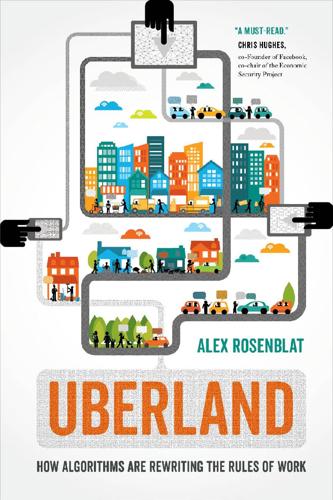
Uberland: How Algorithms Are Rewriting the Rules of Work
by
Alex Rosenblat
Published 22 Oct 2018
The company may deactivate drivers who try to build their own client lists, and many drivers with whom I broach this subject say they don’t even bother trying because they feel safer knowing they are covered by Uber’s insurance policy (which offers $1 million in auto liability insurance per accident if one occurs between the time a driver accepts a trip and the trip’s completion).7 They are penalized if they decline passengers, but Uber doesn’t actually give them the information they need to assess whether a ride is profitable in advance. And Uber perennially, and unilaterally, changes their pay rates, usually by cutting them. Drivers are supposedly free and independent, but Uber’s rules, enforced by these algorithmic managers, significantly limit the opportunities for entrepreneurial decision making available to them. Drivers have noticed the tension between the promise of freedom and the reality of invasive algorithmic management. In fact, this tension is the basis of legal claims that drivers should not be classified as independent contractors.8 One of the fascinating aspects of Uber’s approach is that according to the company, its drivers are not workers at all—they are “consumers” of Uber’s technology services, just as passengers are.
…
LET’S TAKE A RIDE As a technology company in the ridehail business, Uber has an employment model that is changing the nature of work. The company promised to leverage its technology to provide mass entrepreneurship to independent workers. At Uber, algorithms manage how much drivers are paid, where and when they work, and the eligibility requirements for their employment. But the power of algorithmic management is obscured from view, hidden within the black box of the app’s design. While speaking with hundreds of drivers, culling thousands of forum posts online, and working together with scholars across disciplines to suss out the implications of what I’ve observed, I’ve found that the technology practices Uber implements (such as algorithms) significantly shape and control how drivers behave at work.
…
It’s difficult to distinguish between biases in society that are reflected back to us through search results, and algorithmic management practices that these companies use to manipulate users with information and inferences. But services like Google’s search engine and Facebook’s newsfeed are free, so consumers can’t easily complain if the algorithms behind them are not neutral. As the rationale goes, unhappy users should just stop using these sites if they don’t like them (although much evidence suggests that, in practice, it is difficult to opt out of using these platforms in everyday life).3 At Uber, however, the stakes are inherently higher, as algorithmic management affects the livelihoods of drivers.
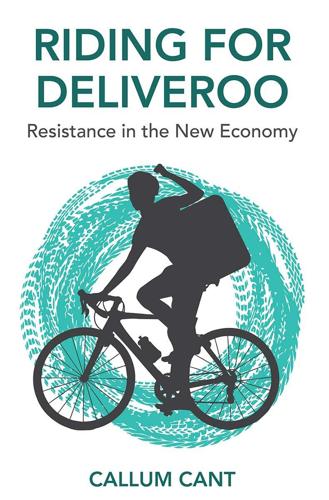
Riding for Deliveroo: Resistance in the New Economy
by
Callum Cant
Published 11 Nov 2019
In return, they get premium wages and conditions. The dispatcher plays a key role in implementing the whole system of control. At Deliveroo, the labour process is actually pretty similar to other kinds of courier work. The key difference is in the chain of command, as a result of ‘algorithmic management’.5 Under algorithmic management, the role of the dispatcher is transformed. In practice, algorithmic management is the partial automation of supervision and labour process coordination through the use of information technology. The highest level of manager left in a city is a ‘driver lead’, an almost-manager, who is relegated to acting as a problem-solver.
…
Deliveroo’s automation of management fits this same general pattern of technological development for the good of bosses not workers, despite the dramatically different circumstances. Algorithmic management, like a system of deskilled factory labour, is designed to further the exploitation of labour-power to provide a competitive advantage to the bosses who invest in it. There are four specific aspects of the competitive advantage gained via Deliveroo’s system of algorithmic management. First, it increases the possible complexity of labour process coordination at lower cost. Algorithms are better at multi-factor calculation and planning of the labour process than human dispatchers, and, given the adaptive potential introduced by machine learning, they can get better at it over time.
…
On top of that, they often develop favourite riders who they give preferential treatment to. This process of favouritism clearly functions as a disciplinary mechanism, so has potential uses for management, but it also causes inefficiencies. With algorithmic management, a manger can eliminate error and implement a more efficient system of favouritism and victimization. Fourth, algorithmic management can be replicated in lots of new locations for little or no additional cost. The function of the app can be supervised from a central, continental office rather than local dispatch offices. As a result, Deliveroo is very light on its feet.

Futureproof: 9 Rules for Humans in the Age of Automation
by
Kevin Roose
Published 9 Mar 2021
Classification: LCC QA76.9.C66 R635 2020 (print) | LCC QA76.9.C66 (ebook) | DDC 303.48/34—dc23 LC record available at https://lccn.loc.gov/2020001669 LC ebook record available at https://lccn.loc.gov/2020001670 Ebook ISBN 9780593133354 randomhousebooks.com Book design by Susan Turner, adapted for ebook Cover design: Rachel Gogel ep_prh_5.6.1_c0_r0 Contents Cover Title Page Copyright Epigraph Introduction Part I: The Machines Chapter One: Birth of a Suboptimist Chapter Two: The Myth of the Robot-Proof Job Chapter Three: How Machines Really Replace Us Chapter Four: The Algorithmic Manager Chapter Five: Beware of Boring Bots Part II: The Rules Rule 1: Be Surprising, Social, and Scarce Rule 2: Resist Machine Drift Rule 3: Demote Your Devices Rule 4: Leave Handprints Rule 5: Don’t Be an Endpoint Rule 6: Treat AI Like a Chimp Army Rule 7: Build Big Nets and Small Webs Rule 8: Learn Machine-Age Humanities Rule 9: Arm the Rebels Dedication Acknowledgments Appendix: Making a Futureproof Plan Reading List Notes By Kevin Roose About the Author Proceed as way opens.
…
It’s almost certain that some of the technologies in our lives today will end up costing humans their jobs, just as these tools did. An easy lesson to draw from history is that machines disrupt our lives in ways we don’t see coming. We worry about Skynet, not spreadsheets. And when the change arrives, we’re often caught by surprise. Four The Algorithmic Manager I felt so stifled, my brain wasn’t needed anymore. You just sit there like a dummy and stare at the damn thing. I’m used to being in control, doing my own planning. Now I feel like someone else has made all the decisions for me. I feel downgraded. —worker at a recently automated General Electric plant in 1970 Every weekday, Conor Sprouls goes to work as a customer service representative for MetLife at a call center in Warwick, Rhode Island.
…
IBM has used Watson, its AI platform, in employee performance reviews—meaning that your bonus might be determined not simply by how you did last year, but by how the algorithm predicts you’ll do next year. On-demand platforms like Uber and Lyft have dispensed with the idea of human supervision altogether, putting decisions like pay, dispatching, and dispute resolution in the hands of algorithms. Algorithmic management has become a lucrative industry. In addition to Cogito, there are also retail-oriented AI companies like Percolata, a Silicon Valley start-up that counts Uniqlo and 7-Eleven among its clients, which uses in-store sensors to calculate a “true productivity” score for each worker. Another AI start-up, Beqom, automates the process of calculating worker pay and year-end bonuses.

Internet for the People: The Fight for Our Digital Future
by
Ben Tarnoff
Published 13 Jun 2022
The operator entered the relevant data and the program returned the load plan. It took thirty seconds. Doing everything on paper took days. This may have been the first time in history that a computer, speaking to another computer through the internet, told somebody what to do. It was an example of what we would now call “algorithmic management,” and it shows that the purpose of linking the mainframe with the battlefield was that the mainframe could help manage the battlefield: DARPA’s pitch to the Pentagon centered on the internet’s usefulness for command and control in mobile environments. It would be many years before a truly mobile internet appeared, however.
…
It would be many years before a truly mobile internet appeared, however. When it did, the possible future that briefly flickered into view on that day at Fort Bragg returned with it. As DARPA had predicted, the elasticity of the internet, its skill in conducting data across heterogeneous networks over large distances, made it a powerful tool for algorithmic management. No company has fulfilled this prediction more energetically than Uber. Founded in 2009, it would be an online mall in the mold of Google, Facebook, and Amazon—though it didn’t make a market in attention or in goods but rather in labor, matching customers who wanted a service performed with the workers who could perform it, on demand.
…
When they drive, how often their rides last, how fast they’re going, how hard they hit the brakes—the app records all these data points, among many others, and transmits them to the cloud for analysis, which improves the algorithms further. The routes become more efficient. The nudges to persuade drivers to keep driving become more personalized. Algorithmic management thus enables Uber and its many “gig economy” imitators to coordinate the labor of millions of workers without the need for middle managers, and with more technical sophistication than middle managers could ever achieve. Yet this is only one advantage. The other is that, by having software rather than humans telling workers what to do, and having the software use techniques like nudges and gamification, gig companies can pretend that nobody is telling the workers what to do, and therefore that they are not really workers at all.

The Smartphone Society
by
Nicole Aschoff
The Smartphone Society examines how our individual engagement with our hand machines, for better and for worse, is part of a societal transformation—a new era of tension, uncertainty, and possibility. One final note: This is a book for everyone. I present an analysis of the pressing issues of our time—mediated interaction, oppression, surveillance, algorithmic management, neoliberal ideology, financialization—in a language and framing accessible to all readers. I adopted this approach consciously, guided by the conviction that the future of our smartphone society should be widely discussed and democratically decided. The challenges of this moment are too important to be left to software engineers, academics, and venture capitalists.
…
Tech companies push this interpretation, emphasizing how they provide the digital platform—digital infrastructure that facilitates interactions (often commercial) between at least two people or groups—and you provide the hustle. Uber, for example, is adamant that it is not the employer of the roughly one million drivers worldwide who use its app to find people to ferry around. Researchers at Carnegie Mellon’s Human-Computer Interaction Institute aren’t so sure. They call the Uber arrangement “algorithmic management.”50 App workers who use these platforms to earn money don’t have easy access to a flesh-and-blood manager. Instead they interact with an algorithm—a set of exact instructions to solve a problem or perform a computation. Algorithms can be written to perform simple tasks, like adding or subtracting numbers, or complex tasks, such as playing a video or, in the case of Uber, telling the driver where to drive, paying them what they are owed, and so forth.
…
Reliable data on how much pay Uber and Lyft drivers take home is hard to come by, but a recent driver-earnings survey found that drivers of Uber’s most popular service, Uber-X, made a median wage of $14.73 an hour in 2018 after tips but before gas, insurance, and repairs—substantially less than a living wage.52 Amazon warehouse workers are algorithmically managed in a different way. Each “picker” has a GPS monitor that tells her precisely which way to walk to get to the product she’s looking for and the number of seconds it should take her to get there. If she walks a different way, or takes too long, she’ll get a warning and possibly a demerit, and too many demerits can add up to dismissal.53 Amazon’s model exemplifies the steady intensification of work over the past few decades.
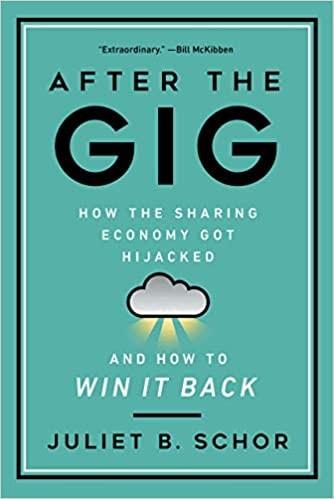
After the Gig: How the Sharing Economy Got Hijacked and How to Win It Back
by
Juliet Schor
,
William Attwood-Charles
and
Mehmet Cansoy
Published 15 Mar 2020
I’ve already noted that workers’ experiences are not uniform, with variation in pay rates, job satisfaction, and how they do the work. As we saw these differences playing out at individual companies, we realized that they are explained by how dependent the worker is on income from the platform to pay basic living expenses. The two dominant approaches to platform work—algorithmic management and the precariousness of independent contracting—have largely failed to account for this diversity of outcomes and its significance. That means they have also missed the underlying conditions which have led to so much diversity, which we call the “retreat from control.” In contrast to conventional employers, platforms allow workers to choose their schedules and number of hours worked, and do not directly supervise the labor process.
…
The experiences of supplementals are different, as they are able to boost earnings to finance discretionary spending or savings. Situations outside the platform make all the difference. Recognizing this basic reality led us to reevaluate the two dominant theories scholars have used to understand what’s going on with platforms—algorithmic control and policies of precarity. The Algorithmic Manager Algorithms have become a pervasive feature of modern life.35 They drive search results on Google, predict outcomes in the criminal justice system, and determine access to healthcare and social services. In workplaces, “people analytics” are being used for hiring, performance evaluation, and surveillance.36 But while algorithms are capable of yielding good outcomes, they are also problematic “black boxes,” as Frank Pasquale and others have argued,37 that are known to produce racially biased outcomes and inaccurate results.
…
TaskRabbits are often free to do tasks as they prefer, although in some cases clients are more directive. Ride-hail arguably offers the least amount of freedom. But even there, soft control via nudges affords workers discretion.82 Cameron finds that drivers have “contingent autonomy.”83 Alex Wood and colleagues, who studied microtasking, describe “autonomy in the shadow of algorithmic management.”84 While we find more worker sovereignty on the more lucrative platforms, the sector as a whole differs from conventional workplaces in this regard. Earners are also able to pursue divergent economic strategies without platform interference. This hasn’t been written about, but it stood out in our data.

Leadership by Algorithm: Who Leads and Who Follows in the AI Era?
by
David de Cremer
Published 25 May 2020
Summary: The benefits of inclusive leadership Different departments to co-operate Integrating teams of data scientists in the daily operations of the company Promoting transparency in communication and exchange of data Empower algorithms in non-biased ways Be humble, and work on being tech savvy Chapter 10: What Will Be and What Should Be Too good to be true? The end user is technology, or am I wrong? What about the human? We will survive… again! Co-operation above all How to move on Building the right culture Humans lead, algorithms manage Who knows where to go? Continuous education Humanity in AI as a guiding tool Tolerance for imperfection Conclusion Publishing details Praise for Leadership by Algorithm “Everyone is talking about artificial intelligence, but no one has a clue how it will affect the way organizations are managed… until now.
…
With this set-up, many believe that the ability of blockchain to provide total control will help increase feelings of safety, and, hence, trust. Isn’t that what managers should be doing in the first place? If so, technology like blockchain will indeed become part of our management systems very soon. Management by algorithm But, to answer the question of whether the algorithmic manager will wake up soon, let us return again to how we defined management. As I explained earlier, the purpose of management is to ensure that order and stability is maintained. According to our initial analysis, algorithms seem perfectly equipped to achieve this purpose. Indeed, as all the examples illustrate, algorithms penetrate managerial jobs by providing more specific and consistent ways of assessing, monitoring and evaluating employees.
…
But, these same algorithms are not able to provide the authentic sense of leadership required to make decisions and subsequent meaningful changes to the humans being led. Building a culture that effects employees’ ways of thinking and acting requires a process of logic that connects with our human identity and ambitions. Humans lead, algorithms manage What this discussion makes clear is that the leadership of the future should be able to create a culture in which it becomes meaningful for humans to collaborate with non-humans. This empowerment of the new diversity requires guidance in such a way that both parties know their position within the work setting and accordingly create value that serves a society defined by humanity rather than by technological innovation.
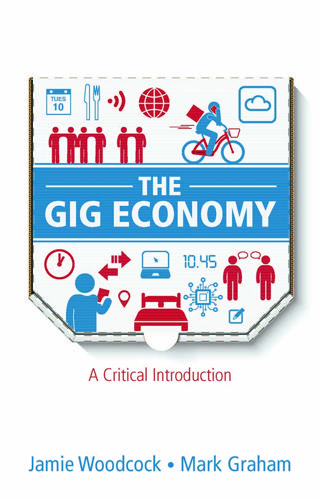
The Gig Economy: A Critical Introduction
by
Jamie Woodcock
and
Mark Graham
Published 17 Jan 2020
In the case of Uber, the platform with its collection of data and automated back-end provides a scalability far beyond existing taxi companies. Building on this, the smartphone app has replaced the physical radio dispatcher as the interface. The use of technology – as well as huge amounts of marketing – provides powerful network effects that draw in both drivers and customers, further spurring this growth. The use of algorithmic management (Lee et al., 2015) keeps the costs low, while providing a new way to effectively manage a geographically dispersed and scalable workforce. Jobs are assigned and evaluated through code and data, without the need for human intervention. There is little chance of feedback, negotiation or the possibility of disputing decisions, resulting in very little transparency for workers.
…
The issues of self-employment mean that in many contexts, workers cannot join a trade union – let alone have it recognized – or organize a legal strike. However, this also creates a kind of ‘illusion of control’ for platforms like Deliveroo (Woodcock, forthcoming). While they are able to use forms of ‘algorithmic management’ (Lee et al., 2015; Rosenblat and Stark, 2016; Rosenblat, 2018) to control the work, this becomes much harder when workers decide to resist. As Deliveroo riders were classified as self-employed, independent contractors, the regulations and laws governing strike action did not apply to them.
…
Yin, M., Gray, M.L., Suri, S. and Vaughan, J.W. (2016), The communication network within the crowd. Proceedings of the 25th International World Wide Web Conference (WWW), Montreal, Canada, 11 April. Index A accountability 124–30, 141 ACFTU (All-China Federation of Trade Unions) 100 Ackroyd, S. 34 Africa size of gig economy 39 algorithmic management 52 Amabile, Teresa 27 Amazon 25 Amazon Mechanical Turk 6, 43, 58, 59–60, 66, 84, 85–6, 87–8 ‘Dear Mr. Bezos’ letters 87–8, 106 Turkopticon 106–7, 123, 133 Anderson, B. 80 Antunes, Ricardo 36 application programming interfaces (API) 58 apps 5, 51, 52, 133, 138 artificial intelligence 50, 58, 60, 66 Aslam, Yaseen 76 assembly line 24, 94, 117 Australia 127 Australian Independent Contractors Act 128 automation 66–7 Avendano, Pablo 73 B Badger, Adam 86–7 Bangalore (India) 98–9, 102 Barbrook, R. 37 Barry, J. 49 Beck, Ulrich 17 Bent, P. 13, 16 Berg, J. 55 Besant, Annie 14 Bezos, Jeff 87 Bolt 77 Bourdieu, Pierre 17 ‘BrainWorkers’ 33 Braverman, Harry 111 Bryant and May match factory 14 C Californian Ideology 37 call centres 24, 31 outsourcing of 37, 54 Callinicos, Brent 49 Cameron, A. 37 Cant, Callum 40, 96 capitalism cognitive 37 gendered basis of 29 car industry 110 care work 64, 66, 79–83 low barriers to entry 67 and repeat transactions 68 Care.com 80, 80–1 casualization 5, 15 Caviar 73 ‘ChainWorkers’ 33 Cheung, Adora 103 China worker resistance and strikes 100 Christie, N. 73 cleaning work 5–6, 64 low barriers to entry 67 migrant workers 30 cloudworker platforms 6, 43, 53–61, 63, 64, 69, 93 atomization of 92 availability of 56 location of 55, 57 removal of barriers to entry for 69 and resistance 104–8 setting rates of pay 65 and spatial control 63 temporal control 64 cognitive capitalism 37 collaborations 123, 132, 136 collective bargaining 30, 34, 37, 49, 80, 130, 134, 135–6, 143 collective organization 100, 134 commercial content moderation (CCM) 61 computerization 66 consumer attitudes/preferences 27 contingent work 19 Convention on Platform Work, Draft 130, 146–51 cooperatives, platform 138–9 Countouris, N. 129 Craigslist 22 crowdsourcing 58 crowdworkers 55, 90 see also microwork; online freelancing D Dalla Costa, Mariarosa 29 Darcy, Alison 60 data collection 65–6 De Stefano, V. 129 deindustrialization 36, 84 Deliveroo 2, 6, 23, 32, 40, 71–4, 115, 127 experience of working for 7–8, 31, 71, 72–4 self-organization for workers 95 strike action 95–6, 97 delivery work(ers)/platforms 5, 27, 62, 63, 68 and automation 67 and collective organization 134 experiences of workers 71–5 low entry requirements 67 see also Deliveroo democratic ownership 136–40, 141 Denmark 3F trade union 134–5 Desai, Bhairavi 79 developing countries internet penetration rate 25 Didi Chuxing 22, 102 digital divides 25 digital legibility 23–5, 65–7 digital platforms 1, 2, 3, 4, 54–5 Directive on Transparent and Predictable Working Condition in the European Union 129 dock work(ers) 13–14, 15, 38 strike (1889) 15 domestic work(ers) 29–30, 62, 63, 66, 79–83 as central component of capitalism 29 factors determining working conditions 80 numbers 80 positive and negative outcomes for 81 and repeat transactions 68 in South Africa 81–3 Doogan, Kevin 18 E economic crisis (late 1970s) 33 Elance 22 entertainment industries 135 Eurobarometer 40 European Commission 35 Expensify 60 F Facebook 45, 60, 121, 123, 133 factories/factory work 15–16, 94 measuring of factory labour process by Taylor 23–4 Fair Crowd Work website 123 Fairwork Foundation project 121–2, 130, 146–51 Farrar, James 75, 75–6, 77–8, 101 feedback 52, 80, 92, 93 financial crisis (2008) 35 Fiverr 20, 23 flexibility, desire for by workers 4–5, 30–3, 71, 115 flexicurity 35 Flipkart 22 Foodora 127 Fordism 117 fragmented work 5, 40, 114 Freelancer 6, 54, 64, 89 freelancing, online see online freelancing Frey, C.B. 66 G gamification 86 gender and capitalism 29 and relationships of work 28–30 geographically tethered work/platforms 5–6, 7, 34, 50–2, 63 control over workforce 68 forms of resistance in 94–104 setting rates of pay 65 temporal control 64–5 Ghana 8, 64, 92 gig economy advantages 4–5 characteristics 114–15 controversy over classification of people involved 43–4 existence due to digital transformation 114 factors facilitating growth of 19, 114 five principles for ‘fair work’ in 122 future 112–45 governance in 62 meaning of 3–7 numbers working in 1–2 operation of 41–69 origins 11–40 pitfalls 5, 116 preconditions that shape the 19–28 rise of 38–40 ways to bring about change 142–4 gig economy workers barriers to entry for 67–8 communicating with each other 132–4 de-personalization of 118, 120 desire for flexibility 4–5, 31–3, 71, 115 experiences of 70–92 invisibility of 6, 80 lack of collective voice 6, 77 lack of effective regulation for 128–9 misclassified as self-employed 44 numbers 39–40 securing protection through courts 127 working conditions 6, 9 gigs, musical 3 Global North 12, 13, 32, 46 and cloudworkers 55 and microwork 84 and outsourcing 44 size of gig economy 39 Global South 32, 46 internet penetration rate 25 size of gig economy 39 women and online freelancing 90 globalization 19, 37–8 Goodwin, Tom 45, 121 Graeber, David 31 Guru.com 22 H Handy 80 Harvey, David 33, 53 Heeks, Richard 39 Herman, S. 39 Hilfr.dk 134–5 Homejoy 68, 103–4 Howe, J. 58 human intelligence tasks (HITs) 60 Humphries, S. 13–14 Hunt, A. 28, 81, 82 Huws, U. 39–40 I IAEA (International Arts and Entertainment Alliance) 135 Iles, Anthony 32 ILO (International Labour Organization) 16–17, 129 Declaration of Philadelphia (1944) 142 Independent Workers Union of Great Britain see IWGB India delivery drivers 74 strikes by Uber drivers 102 Industrial Workers of the Word see IWW industrialization 16 interface 45 International Arts and Entertainment Alliance see IAEA International Labour Organization see ILO Internet access and penetration rate 25 Irani, Lilly 106 IWGB (Independent Workers Union of Great Britain) 73, 97, 101, 109, 127, 134 IWW (Industrial Workers of the World) 97, 101 J James, Selma 29, 81 job insecurity, growth in 18–19 K Kalanick, Travis 23, 48, 49 Kalleberg, A.L. 18 Kenya Ajira Digital programme 35 Kessler, Sarah 11 L labour law 114, 117, 126, 128, 129 Lagos (Nigeria) 89, 124 Lanier, Jaron 58 LaPlante, Rochelle 60 lean platforms 35, 45 legibility, digital 23–5, 65–7 Li, Qi 100 Limer, Eric 85–6 Living Wage Foundation 122 London taxi arrangement 47 long-term unemployment 18 low-paid work, increase in 35, 139 M Machingura, F. 81, 82 McKinsey 1–2, 39 McKinsey Global Institute 66 Manila (Philippines) 89, 90 Maputo (Mozambique) 26–7 Marsh, Greg 129 Marx, Karl 11–12, 22, 72, 121 Mason, Paul 35 mass connectivity 25–7 Massey, Doreen 63 Matchwoman strike 14 Mateescu, A. 79, 80, 81 Messina, Jim 48–9 microwork 6, 55, 58–61, 62, 83–9, 104 and automation 66–7 experiences of workers 83–9 feelings of alienation 88 numbers engaged in 83–4 wages 84–5 see also Amazon Mechanical Turk 59 migrant workers 30, 80, 90 migration status 30 Mitropoulos, Angela 17, 32 mobile phones 25–6 Mondragon Corporation 138–9 Moody, Kim 40, 111 Moyer-Lee, Jason 98 N Nedelkoska, L. 66 neoliberalism 18, 33–5, 52 characteristics of 34 New York Uber 78–9 NHS (National Health Service) 5 Novogratz, Mike 49–50 O O’Connor vs Uber Technologies Inc. (2015) 124, 126 Ojanperä, Sanna 55 Ola 102 online freelancing 6, 7, 8–9, 43, 55, 62, 141 barriers to entry for workers 67 barriers to organizing 104 experiences of workers 89–92 and feedback 93 reasons for doing 89–90 support forums 104–5 wages 90, 91 and worker resistance 104–5 Osborne, M.A. 66 outcome thinking 118, 124 outsourcing 19, 37–8, 39, 44–5, 51, 54 microwork as extension of 58 P Pandor, Aisha 83 Pasha, Tanveer 102 pay rates, setting of 65 Peck, Jamie 33, 35 Peterloo Massacre (1819) 108 Platform Cooperative Consortium 138 platforms/platform work 2, 4 ability to set pay rates 65 and accountability 125–30 barriers to entry for workers 67–8 as a civic utility 139–40 cloudwork see cloudwork connecting workers and clients 20–1, 22–3, 43, 138 cooperatives 138–9 core functions 23 degree of explicit coordination 68–9 democratic ownership of 136–40, 141 digital legibility 23–5, 65–7 Draft Convention on Platform Work 130, 146–51 early 22 geographically tethered model see geographically tethered model infrastructure 20–3 intermediate function 42–3 lean 35, 45 meaning and operation of 42–6 microwork see microwork negotiation-based matching 22–3 reliance on network effects 45 repeat transactions 68 setting up of ‘counter’ 123 spatial control 62, 63–4 spatiality and temporality of 42–3 spending money on public relations and advertising 28 static-price matching 23 temporal control 64–5 understanding how they work 61–9 Plouffe, David 49 Pollman, E. 49 precariat 18 precarious work(ers) 13–19, 32–3, 38 definition 16–17 two kinds of 33 profitability, crisis of 35, 36, 42 public sector and gig economy 17 and outsourcing 44 Q Quintini, G. 66 R racialization of work 30 racism 30 ratings strategy and transparency 122–3 Ravenelle, Alexandrea 37, 70 Raw, Louise 14 Reagan, Ronald 34 reddit 123 regulation 144 lack of for gig economy workers 128–9 labour law 19, 114, 117, 126, 128 state 19, 33–6 regulatory entrepreneurship 49 repeat transactions and platforms 68 resistance see worker resistance Roberts, Sarah 61 S SAG-AFTRA 135 Samman, E. 28 Schifter, Doug 79 Scholz, Trebor 48, 49, 138, 139 Schor, Juliet 103 Screen Actors Guild (SAG) 135 Second World War 110 self-employment 32, 43–4, 96, 98, 108 Semuels, Alana 84 service industries, growth of 34 Seymour, Richard 18–19 sharing economy 11 Shekhawat, Dushyant 74 ‘shock doctrine’ 34 short term contracts 4 Silberman, Six 106 slavery 30 Slee, Tom 50, 78 soldiering 23 South Africa domestic workers in 81–3 Uber 76, 127–8 worker resistance 99–100 South African Domestic Services and Allied Workers Union (SADSAWU) 82–3 South African Labour Relations Act 128 South Korea 35 South London Gas Workers strike (1889) 14–15 Spain 127 spatial control and platforms 62, 63–4 Srnicek, Nick 4, 42, 45 standard employment relationship 5, 12–13, 16, 18, 32, 33–4 Standing, Guy 17–18, 27 state regulation 19, 33–6 strikes 14–15, 94, 95–6, 99–100, 109, 142–3 preconditions for starting 109 surveillance 24 of delivery drivers 74 Upwork workers’ resistance to 105 Susskind, R. 118 SweepSouth 80, 81–3 Switzerland Notime 102 T TaskRabbit 103 taxi industry 51–2 taxi work(ers) 75–9, 134 and collective organization 134 see also Uber Taylor, Bill 100 Taylor, Frederick 23–4 Taylor, Matthew 129 Taylor Review of Modern Working Practices, The 129 technological changes 19, 21 temporal control and platforms 64–5 temporary work(ers) 3, 17 Thatcher, Margaret 34 Thompson, S. 34 Ticona, J. 79, 80, 81 Tillett, Ben 14 tipping 75 Tolpuddle Martyrs 108–9 trade unions 6, 18, 34, 36, 92–3, 97, 108–9, 134, 135, 143–4 decline of 36, 37 and dock workers 15 early 108–9 and gig economy workers 109–10, 136 and IWGB 97 rise in membership 15 textile 108 Transnational Federation of Couriers 97 transparency 118–24, 141 establishment of ‘counter platforms’ 123 ratings strategy 122–3 Transport for London 28 Turkopticon 106–7, 123, 133 U Uber 2, 4, 20, 23, 25, 32, 44, 45, 46–50, 52, 61, 73–9, 94–5, 108, 115, 121, 124, 139 business model 48 Change.org petition 28 data collection 50, 65–6 drivers’ wages 49–50, 77–8 engagement with regulation and transport policy 48 funding 47–8 and ‘greyballing’ 49 in New York 78–9 O’Connor vs Uber Technologies Inc. (2015) 124, 126 power passengers hold over drivers 75–6 public relations and lobbying campaigns 48–9 rating system 75 safety issues and rising petrol prices for drivers in South Africa 76–7 and self-driving vehicles 50 and tipping 75 Uber International Holding(s) BV 128 Uber Technologies SA 127 UberX 47 worker resistance and strikes 100–2 unfair dismissal 44, 134 United Kingdom employment regulation issues 129 neoliberalism 34 and outsourcing 44–5 worker resistance and strikes 100–1 United Private Hire Drivers (UPHD) 75 United States neoliberalism 34 Uber 47–9 UPHD (United Private Hire Drivers) 76, 101 UpWork 6, 8, 43, 54, 64, 121 resistance of surveillance methods by workers 105 Upwork.com 89, 91 US Chamber of Commerce 108 V van Doorn, Niels 42 Vandaele, Kurt 95, 97 venture capital 36 visibility 136 vWorker 22 W wages microworkers 84–5 online freelancing 90, 91 setting of pay rates 65 Uber drivers 49–50, 77–8 Ward, H. 73 Webster, G.E. 16 Weightman, G.E. 13–14 WhatsApp 95, 99, 123, 132, 133 Williams, Eric 30 women and domestic work 29–30 and online freelancing in the Global South 90 Wood, Alex 95, 104–5, 107 work, transformation of 12–13 worker power 19, 36–7, 130–6, 141 worker resistance 93–111, 113–14 and cloudworkers 104–8 and communication 107 food platform strikes 95–7 formation of networks and meetings 95, 98–9 geographically tethered work 94–104 history of 94 legal battles over employment status 98 and online freelancing 104–5 and self-employment status 98 strikes 14–15, 94, 95–6, 99, 100–1 taking of work off-platform 103 and trade unions 97, 107–11 Uber 101–2 and WhatsApp groups 98, 99, 132 workers’ rights 34, 44, 98, 101, 130, 135, 139, 140, 144 Y YouTube 60 Z Zomato 98–9 POLITY END USER LICENSE AGREEMENT Go to www.politybooks.com/eula to access Polity’s ebook EULA.

Code Dependent: Living in the Shadow of AI
by
Madhumita Murgia
Published 20 Mar 2024
He was part of a group of five claimants represented by the union, suing Uber and another ride-hailing app, Ola Cabs, for access to their personal data – especially when used as a basis for suspensions and wage penalties. The ruling, by the court in Amsterdam where Uber’s European headquarters are based, broke new ground on the rights of workers subject to algorithmic management. In the case against Ola Cabs, the Amsterdam court found that the app had used an entirely automated system to make deductions from one driver’s earnings, which contravene data protection laws that give people a right to human review of algorithms.6 Separately, it asked Uber to provide the defendants in the case with the personal data it held on them, specifically the information used to block the drivers from the app.
…
In China, where independent labour unions are illegal, workers are banding together informally, organizing via large WeChat groups such as Knights League, on which they also share tips such as difficult delivery areas or ‘no-fly’ zones.26 The one thing that draws them all together is their collective rejection of the tyranny of AI-controlled work. Protests against Uber in Nairobi and Meituan in Shenzhen were both ignited by arbitrary changes in how wages were calculated by app software.27 Farrar said, ‘This is the whole “hiddenness” of algorithmic management – what are the rules? What are we breaking? How do we know? The game is, they won’t tell you what the rules are, because that would mean we are being managed by the algorithm.’ * My interviews with a dozen or so gig workers across four countries are a drop in the ocean of work being done on algorithms and worker rights.
…
.: ‘The Machine Stops’ ref1 Fortnite ref1 Foxglove ref1 Framestore ref1 Francis, Pope ref1, ref2 fraudulent activity benefits ref1 gig workers and ref1, ref2, ref3 free will ref1, ref2 Freedom of Information requests ref1, ref2, ref3 ‘Fuck the algorithm’ ref1 Fussey, Pete ref1 Galeano, Eduardo ref1 gang rape ref1, ref2 gang violence ref1, ref2, ref3, ref4 Gebru, Timnit ref1, ref2, ref3 Generative Adversarial Networks (GANs) ref1 generative AI ref1, ref2, ref3, ref4, ref5, ref6, ref7, ref8, ref9, ref10 AI alignment and ref1, ref2, ref3 ChatGPT see ChatGPT creativity and ref1, ref2, ref3, ref4 deepfakes and ref1, ref2, ref3 GPT (Generative Pre-trained Transformer) ref1, ref2, ref3, ref4 job losses and ref1 ‘The Machine Stops’ and ref1 Georgetown University ref1 gig work ref1, ref2, ref3, ref4, ref5 Amsterdam court Uber ruling ref1 autonomy and ref1 collective bargaining and ref1 colonialism and ref1, ref2, ref3 #DeclineNow’ hashtag ref1 driver profiles ref1 facial recognition technologies ref1, ref2, ref3, ref4 fraudulent activity and ref1, ref2, ref3, ref4 ‘going Karura’ ref1 ‘hiddenness’ of algorithmic management and ref1 job allocation algorithm ref1, ref2, ref3, ref4, ref5, ref6 location-checking ref1 migrants and ref1 ‘no-fly’ zones ref1 race and ref1 resistance movement ref1 ‘slaveroo’ ref1 ‘therapy services’ ref1 UberCheats ref1, ref2, ref3 UberEats ref1, ref2 UK Supreme Court ruling ref1 unions and ref1, ref2, ref3 vocabulary to describe AI-driven work ref1 wages ref1, ref2, ref3, ref4, ref5, ref6, ref7, ref8, ref9, ref10, ref11 work systems built to keep drivers apart or turn workers’ lives into games ref1, ref2 Gil, Dario ref1 GitHub ref1 ‘give work, not aid’ ref1 Glastonbury Festival ref1 Glovo ref1 Gojek ref1 ‘going Karura’ ref1 Goldberg, Carrie ref1 golem (inanimate humanoid) ref1 Gonzalez, Wendy ref1 Google ref1 advertising and ref1 AI alignment and ref1 AI diagnostics and ref1, ref2, ref3 Chrome ref1 deepfakes and ref1, ref2, ref3, ref4 DeepMind ref1, ref2, ref3, ref4 driverless cars and ref1 Imagen AI models ref1 Maps ref1, ref2, ref3 Reverse Image ref1 Sama ref1 Search ref1, ref2, ref3, ref4, ref5 Transformer model and ref1 Translate ref1, ref2, ref3, ref4 Gordon’s Wine Bar London ref1 GPT (Generative Pre-trained Transformer) ref1, ref2, ref3, ref4 GPT-4 ref1 Graeber, David ref1 Granary Square, London ref1, ref2 ‘graveyard of pilots’ ref1 Greater Manchester Coalition of Disabled People ref1 Groenendaal, Eline ref1 Guantanamo Bay, political prisoners in ref1 Guardian ref1 Gucci ref1 guiding questions checklist ref1 Gulu ref1 Gumnishka, Iva ref1, ref2, ref3, ref4 Gutiarraz, Norma ref1, ref2, ref3, ref4, ref5 hallucination problem ref1, ref2, ref3 Halsema, Femke ref1, ref2 Hanks, Tom ref1, ref2 Hart, Anna ref1 Hassabis, Demis ref1 Harvey, Adam ref1 Have I Been Trained ref1 healthcare/diagnostics Accredited Social Health Activists (ASHAs) ref1, ref2, ref3 bias in ref1 Covid-19 and ref1, ref2 digital colonialism and ref1 ‘graveyard of pilots’ ref1 heart attacks and ref1, ref2 India and ref1 malaria and ref1 Optum ref1 pain, African Americans and ref1 qTrack ref1, ref2, ref3 Qure.ai ref1, ref2, ref3, ref4 qXR ref1 radiologists ref1, ref2, ref3, ref4, ref5, ref6 Tezpur ref1 tuberculosis ref1, ref2, ref3 without trained doctors ref1 X-ray screening and ref1, ref2, ref3, ref4, ref5, ref6, ref7, ref8, ref9, ref10 heart attacks ref1, ref2 Herndon, Holly ref1 Het Parool ref1, ref2 ‘hiddenness’ of algorithmic management ref1 Hikvision ref1, ref2 Hinton, Geoffrey ref1 Hive Micro ref1 Home Office ref1, ref2, ref3 Hong Kong ref1, ref2, ref3, ref4, ref5 Horizon Worlds ref1 Hornig, Jess ref1 Horus Foundation ref1 Huawei ref1, ref2, ref3 Hui Muslims ref1 Human Rights Watch ref1, ref2, ref3, ref4 ‘humanist’ AI ethics ref1 Humans in the Loop ref1, ref2, ref3, ref4 Hyderabad, India ref1 IBM ref1, ref2, ref3, ref4 Iftimie, Alexandru ref1, ref2, ref3, ref4, ref5 IJburg, Amsterdam ref1 Imagen AI models ref1 iMerit ref1 India ref1, ref2, ref3, ref4, ref5, ref6, ref7, ref8, ref9 facial recognition in ref1, ref2, ref3 healthcare in ref1, ref2, ref3 Industrial Light and Magic ref1 Information Commissioner’s Office ref1 Instacart ref1, ref2 Instagram ref1, ref2 Clearview AI and ref1 content moderators ref1, ref2, ref3, ref4 deepfakes and ref1, ref2, ref3 Integrated Joint Operations Platform (IJOP) ref1, ref2 iPhone ref1 IRA ref1 Iradi, Carina ref1 Iranian coup (1953) ref1 Islam ref1, ref2, ref3, ref4, ref5 Israel ref1, ref2, ref3 Italian government ref1 Jaber, Faisal bin Ali ref1 Jainabai ref1 Janah, Leila ref1, ref2, ref3 Jay Gould, Stephen ref1 Jewish faith ref1, ref2, ref3, ref4 Jiang, Mr ref1 Jim Crow era ref1 jobs application ref1, ref2, ref3 ‘bullshit jobs’ ref1 data annotation and data-labelling ref1 gig work allocation ref1, ref2, ref3, ref4, ref5, ref6 losses ref1, ref2, ref3 Johannesburg ref1, ref2 Johnny Depp–Amber Heard trial (2022) ref1 Jones, Llion ref1 Joske, Alex ref1 Julian-Borchak Williams, Robert ref1 Juncosa, Maripi ref1 Kafka, Franz ref1, ref2, ref3, ref4 Kaiser, Lukasz ref1 Kampala, Uganda ref1, ref2, ref3 Kellgren & Lawrence classification system. ref1 Kelly, John ref1 Kibera, Nairobi ref1 Kinzer, Stephen: All the Shah’s Men ref1 Knights League ref1 Koli, Ian ref1, ref2, ref3, ref4, ref5, ref6, ref7, ref8, ref9, ref10 Kolkata, India ref1 Koning, Anouk de ref1 Laan, Eberhard van der ref1 labour unions ref1, ref2, ref3, ref4, ref5, ref6 La Fors, Karolina ref1 LAION-5B ref1 Lanata, Jorge ref1 Lapetus Solutions ref1 large language model (LLM) ref1, ref2, ref3 Lawrence, John ref1 Leigh, Manchester ref1 Lensa ref1 Leon ref1 life expectancy ref1 Limited Liability Corporations ref1 LinkedIn ref1 liver transplant ref1 Loew, Rabbi ref1 London delivery apps in ref1, ref2 facial recognition in ref1, ref2, ref3, ref4 riots (2011) ref1 Underground terrorist attacks (2001) and (2005) ref1 Louis Vuitton ref1 Lyft ref1, ref2 McGlynn, Clare ref1, ref2 machine learning advertising and ref1 data annotation and ref1 data colonialism and ref1 gig workers and ref1, ref2, ref3 healthcare and ref1, ref2, ref3 predictive policing and. ref1, ref2, ref3, ref4 rise of ref1 teenage pregnancy and ref1, ref2, ref3 Mahmoud, Ala Shaker ref1 Majeed, Amara ref1, ref2 malaria ref1 Manchester Metropolitan University ref1 marginalized people ref1, ref2, ref3, ref4, ref5, ref6, ref7, ref8, ref9 Martin, Noelle ref1, ref2, ref3, ref4, ref5, ref6, ref7 Masood, S.
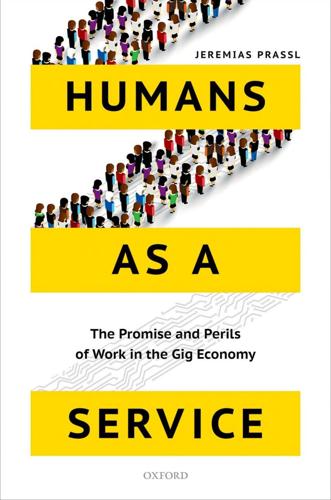
Humans as a Service: The Promise and Perils of Work in the Gig Economy
by
Jeremias Prassl
Published 7 May 2018
Nearly every aspect of on-demand work is shaped by the rating algorithms’ constant hovering over each worker like a modern-day Panoptes, the all-seeing watchman of Greek mythology: from vetting potential entrants and assign- ing tasks, to controlling how work is done and remunerated, and sanction- ing unsatisfactory performance—often without any transparency or accountability. As Judge Chen put it, citing Michel Foucault, ‘a state of conscious and permanent visibility . . . assures the automatic functioning of power’.19 Algorithmic Management ‘On the Internet,’ a 1993 New Yorker cartoon suggested, ‘nobody knows you’re a dog.’ In the on-demand economy, it seems that platforms want to know everything about their users—and their dogs. Control begins at the moment a potential worker registers with a platform, with most operators demanding extensive information and screening individual workers’ cre- dentials before activating their accounts in a process significantly more intrusive than merely signing up to yet another online service.
…
This ‘disrup- tion’ is based on contractual misclassification (the simple assertion in plat- forms’ terms and conditions that workers are independent contractors rather than employees) and the increasing use of multilateral work arrangements, * * * 96 Disrupting the Disruptors through the sharing and blurring of employer control between customers and platforms.4 Let’s look at how the law can grapple with each of these challenges. (Mis)Classifying Workers When we explored the reality of work in the on-demand economy, we saw how tight control over all aspects of service delivery was the very hallmark of algorithmic management. Employment classification should be quite straightforward, then: when a platform controls everything from which tasks are assigned to how they are performed and paid, surely we can’t speak of ‘grey areas’? Creating such uncertainty, however, is the very point of the carefully drafted and strongly worded terms and conditions that prospective workers and customers must accept before joining a platform: TASKERS ARE INDEPENDENT CONTRACTORS AND NOT EMPLOYEES OF COMPANY.
…
Rebranding Work Language Matters Peers, Neighbours, Friends Passive Platforms, Freelancing Entrepreneurs Shaping Regulation Entrepreneurship and Innovation Rethinking Employment Regulation Scrutinizing the Narratives 3. Lost in the Crowd Life as a Micro-Entrepreneur Autonomy? Algorithmic Management The Wages of Entrepreneurship Sanctions Self-Determination? Freedom? Entrepreneurship . . . or an On-Demand Trap? 4. The Innovation Paradox Nothing New under the Sun Back to the Future From Workforce to Taskforce Drawing in the Crowds The Intermediaries Struggling in the Crowd History Repeats Itself Why Should We Care?

Radical Technologies: The Design of Everyday Life
by
Adam Greenfield
Published 29 May 2017
However disturbingly crude they remain, to whatever extent they are all too evidently the fruit of their creators’ biases, neuroses and projections, these systems are nevertheless poised to assume responsibility for much of the work that furnishes us with a livelihood, an identity and a sense of self. And they are getting better at what they do with every passing day. What I wish to argue is that whether they are brought together consciously or otherwise, large-scale data analysis, algorithmic management, machine-learning techniques, automation and robotics constitute a coherent set of techniques for the production of an experience I call the posthuman everyday. This is a milieu in which the rhythms we contend with, the ordinary spaces we occupy, and the material and energetic flows we support are all shaped not so much by our own needs but those of the systems that nominally serve us, and in which human perception, scale and desire are no longer the primary yardsticks of value.
…
The dirty, dull, dangerous and demeaning jobs will be the first to be automated, and these remain, for better or worse, precisely the reservoir of opportunity for unskilled, undocumented or otherwise marginalized participants in the workforce. What this does to the culture of work, and to labor’s already imperiled ability to make demands and specify the conditions under which it produces value, deserves treatment at book length. For the present purposes, it seems safe to conclude that between algorithmic management and regulation, and the more than usually exploitative relations that we can see resulting from it,47 hard times are coming for those who have nothing to offer the economy but their muscle, their heart or their sex. I don’t doubt that those who benefit from any such state of affairs will be able to focus the rage of the permanently disemployed on immigrants and other convenient scapegoats, but eventually they too will be compelled to seek some sort of modus vivendi.
…
If we’re disturbed by what we find when we do finally answer queries like these to our own satisfaction, if we dislike the picture of the world and our place in it that we’re left with, we find ourselves confronted with a final set of questions: Can these radical technologies be renounced? Can they be resisted? And if not, can they at least be steered toward somewhat more congenial ends? The possibility of renunciation is easily enough dispensed with. Short of a determined, Kaczynskian flight from the consensual world and all its entanglements, the algorithmic management of life chances in particular will still exert tremendous pressure on the shape of one’s choices, even the structure of one’s consciousness. And even then—whatever steps they may have taken to secrete the traces of their existence from the network’s gaze, however blissfully unaware they may remain of its continuing interest in them—the dweller in a remote, off-the-grid cabin can be certain that data concerning them and their activities will continue to circulate indefinitely, turning up in response to queries and being operated on in unpredictable ways.

Hired: Six Months Undercover in Low-Wage Britain
by
James Bloodworth
Published 1 Mar 2018
Aberfan disaster (1966) 170–1 ACAS 38 acid attacks, delivery drivers protest against, London (July, 2017) 256–7 Ackroyd, Peter 249 Admiral Insurance call centre, Swansea 150, 153–64, 180–1, 183, 185–6, 224 commission used as incentive for employees at 162–3 ‘fun’ culture 155, 161–2, 163, 164, 181 management 162–3, 224 performance league tables 183 politics, employee attitudes towards 164 ‘Renewals Consultant’ role 154 share scheme and dividends 159 staff turnover rate 159 training 155, 160–1 unions/collective action and 185, 186 university graduates employed at 153–4 wages/pay 155–6, 158–60, 164, 180 working hours and conditions 155, 160–4, 180–1, 185–6 Age UK 113 Aiden (building site worker) 135–6 Aiden (former miner) 175 Airbnb 217 Alex (former pit mechanic) 55, 57, 62–3 algorithmic management systems 16–17, 209, 210, 211, 217–18, 222, 223, 227, 231, 232, 242, 249 Aman (Uber driver) 236–8, 239–40, 241, 242, 255 Amazon: accommodation, employee 20–2, 24–6 algorithmic management system 16–17 blue badges 20, 41 breaks, employee 12–14, 36, 48, 49–50, 52–3, 64–5 British workers and 31, 33–4, 35–41, 57, 65, 72–3 diet/health of employees 51–2, 64–5, 70–1 disciplinary system 36, 39–41, 42–4 employment agencies, use of 19, 20, 37, 38, 39, 40, 41, 43, 65–6, 86 see also Transline and PMP Recruitment employment contracts 19–20, 53, 58 food served to employees 12–13, 14, 64 fulfillment centres in former mining areas 54–5 JB’s weekly budget whilst employed at 68–9 migrant labour, use of 11, 12, 13, 15, 20, 21, 22–7, 30, 32, 33, 34, 44, 45, 46, 51, 53, 57, 61–2, 65, 71–5, 258, 260–1 picker role 14, 16, 18, 19, 49, 65, 119, 258 process guide role 22–3 recruitment process 19–20 Rugeley distribution centre, Staffordshire 11–76, 79, 86, 119, 127, 128, 159, 258 security/security guards 11–13, 47, 48–9, 52 survey of employees, GMB 36 Swansea, warehouse in 145–6, 194 tax paid in UK by 146 tiredness/exhaustion of employees 44, 50–1, 65 transgender employees, treatment of 40–1 wages/salary 18, 19, 37–9, 42–3, 65–6, 68, 69, 70, 159 Amodeo, Michael 223 Anne (pensioner in Cwm) 197–8 anti-depressant medication 188 Armitage Shanks 57 Arora brothers 124–5 Aslam, Yaseen 229–30, 250 Assured Shorthold Tenancy 96 Attlee, Clement 173 ‘austerity’ policies 1–2, 6, 108 B&M Bargains 124–5, 126–30 BBC 138, 157, 173, 236 Bentham, Jeremy 182, 194 Berlin Wall, fall of (1989) 263 Bertram, Jo 235, 250–1 Bevan, Aneurin 144, 149, 192–3, 247 Bezos, Jeff 18 Big Issue, The 122 Big Pit National Coal Museum, Blaenavon 167, 170 Blackpool, Lancashire 77–140, 169, 187 accommodation in 80, 124, 137–8 B&M Bargains warehouse in 124–5, 126–31 Bloomfield district 137 building site work in 135–6 Central Drive 81, 120, 132–3 Golden Mile 121–2 health of residents 137 home care work in 81–90, 106–20, 140 homelessness in 95–105 job centres in 133–5 suicide rates in 100 unemployment in 121–3, 138, 139–40 Blaenau Gwent, Wales 187, 188, 190 see also under individual area and place name Booth, William 205 Brereton Colliery, Staffordshire 55 Brian (former miner) 196 Bryn Colliery, Wales 196 Brynmill, Swansea, Wales 150–1 building site work 121, 124, 135–6 buy-to-let housing market 24 Cadman, Scott 244, 245–6, 247–9 call centres 35, 61, 139, 150, 153–64, 180–6, 192, 199, 224 see also Admiral Insurance call centre, Swansea Cameron, David 259 Cannock Chase 21, 28, 54 capitalism 83, 145, 181 co-opts rebellion against 149 consumerism and 146 debt, reliance on 62 English culture overwhelmed by 32–3, 198–9 fall of Berlin Wall (1989) and 263 ‘gig’ economy and 210, 215, 232 platform capitalism 215 religious fatalism appropriated by 161 care sector: Eastern European migrant labour and 114–15 length of home care visits and 108–9, 110 local authority budget cuts and 107–10 privatisation of social care and 106–8, 109 staff training in 85–6 staffing crisis within 84–5, 119 zero hours contracts and 87 see also home care worker Carewatch UK 81–90, 109, 110, 118, 132, 135, 136, 150, 159 Disclosure and Barring Service (DBS) process and 88–90, 109–10 employee reviews of 83–4 employment contracts/conditions 87–8, 118–19 length of care visits and 110 MAR (Medication Administration Record) sheets and 114, 115 recruitment 81–2, 84–5 ‘shadowing’ process 88, 109–10 training 85–6 see also care sector and home care worker Cefn Mawr No. 2, Afan Valley, Wales 171–2 Celcon 57 Centre for Cities 61 Chartered Institute of Personnel and Development 153 Chartists 144, 149 China 183, 196–7 Chris (Amazon employee) 20, 21, 22–6, 65 Citizens Advice 243–4 CitySprint 246, 248–9, 251–2 Claire (Amazon employee) 36, 37–41, 50, 53 class: death of 4 erosion of class solidarity 193–4 fall of Berlin Wall and 263 liberalism and 263 scientific theories of 4, 17 see also middle-class and working-class Claudiu (housemate of JB) 22 coalition government (2010–15) 109, 115–16 coal mining: decline of industry 54, 55–6, 58, 144–5, 172–9 danger of/disasters 169–72 General Strike and 173 Miners’ Strike (1984–5) 3, 174–7 South Wales Valleys and 143–4, 147–9, 165–79, 180, 188, 189, 190–1, 193, 195, 196 Thatcher and 174–5, 263–4 collectivism 228 communism 17, 173, 178, 228, 263 Compare the Market 155 Conservative Party 3, 7, 109, 175 consumerism 146 Coombes, B.

Blood in the Machine: The Origins of the Rebellion Against Big Tech
by
Brian Merchant
Published 25 Sep 2023
Maybe you don’t even need to imagine this, because you live in the twenty-first century and have seen a corporation, a platform, or a manager use technology to rewrite the social contract that once defined your own job. Maybe you are a cab driver who saved up for years to own your own car and medallion, who knows miles of city streets as if they were your own backyard, only to have Uber show up on the scene, undercut prices with its store of venture capital and its algorithmic management system, and render your investment worthless. Or maybe you have worked for years as a salesperson, acquiring contacts and relationships with vendors, only to see your company introduce an automated portal that performs most of your role. Or maybe you are a writer or an artist who was let go from the digital media company that published your work, just as the outlet announced it would begin using AI to generate content.
…
The algorithm-based gig work model is the next stage in the evolution of the factory, a mode of control over workers that extends beyond mass production and is superior in nearly every way. This explains why Amazon, the second-largest employer in the United States, has adopted such a model, with its Uber-like Flex program for delivery drivers and fully automated hiring and HR systems. Gig app platforms and algorithmic management seek to reduce or eliminate the need for middle managers or HR departments, at least for the working-class “independent contractors” who constitute the bulk of a company’s labor force. Imperturbable algorithms provide the final say on where workers will go and how much they will make. There is little need for office space for the laborers; workers are distributed and diffuse.
…
“There is no doubt that companies across the tech and service economy are trying to move to a 1099 workforce”—one that runs on precarious contract labor rather than salaried jobs—“which dramatically lowers labor costs and transfers risks and liabilities,” Dubal says. That has grown to brand new heights. We’ll see it more in restaurant work and retail and education and health and hospitality for sure. In addition to taking rights and security away from people who really need them, these business practices are infused with algorithmic management practices. The law hinges on the amount of control the employer exerts on the employee—so much of the control is exerted through social psychological gaming algorithms. It looks like you have choice and volition, but really it’s training you to work for the platform in a specific way. There is a purposefully generated information asymmetry, Dubal says.

Nexus: A Brief History of Information Networks From the Stone Age to AI
by
Yuval Noah Harari
Published 9 Sep 2024
He further incriminated himself with several videos he posted to Snapchat from within the Capitol. Another rioter sought to protect himself from detection by wearing a face mask on January 6, avoiding live-streaming, and using a cellphone registered in his mother’s name—but it availed him little. The FBI’s algorithms managed to match video footage from January 6, 2021, to a photo from the man’s 2017 passport application. They also matched a distinctive Knights of Columbus jacket he wore on January 6 to the jacket he wore on a different occasion, which was captured in a YouTube clip. The phone registered in his mother’s name was geolocated to inside the Capitol, and a license plate reader recorded his car near the Capitol on the morning of January 6.27 Facial recognition algorithms and AI-searchable databases are now standard tools of police forces all over the world.
…
In 2014, the leader of the child-trafficking gang was arrested, but it proved impossible to locate Gui Hao and other victims. “The appearance of the children would have changed so much,” explained a police investigator, “that even their parents would not have been able to recognize them”. In 2019, however, a facial recognition algorithm managed to identify the now thirteen-year-old Gui Hao, and the teenager was reunited with his family. To correctly identify Gui Hao, the AI relied on an old photograph of his, taken when he was a toddler. The AI simulated what Gui Hao must look like as a thirteen-year-old, taking into account the drastic impact of maturation as well as potential changes in hair color and hairstyle and compared the resulting simulation to real-life footage.
…
For example, in the 1980s and 1990s chess-playing algorithms were taught almost everything they knew by their human programmers. The humans coded into the algorithm not only the basic rules of chess but also how to evaluate different positions and moves on the board. For example, humans coded a rule that sacrificing a queen in exchange for a pawn is usually a bad idea. These early algorithms managed to defeat human chess masters only because the algorithms could calculate many more moves and evaluate many more positions than a human could. But the algorithms’ abilities remained limited. Since they relied on humans to tell them all the secrets of the game, if the human coders didn’t know something, the algorithms they produced were also unlikely to know it.58 As the field of machine learning developed, algorithms gained more independence.
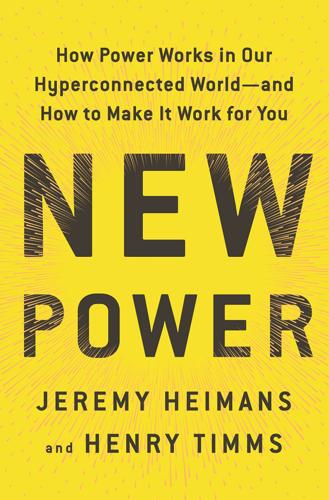
New Power: How Power Works in Our Hyperconnected World--And How to Make It Work for You
by
Jeremy Heimans
and
Henry Timms
Published 2 Apr 2018
Consider a platform like TaskRabbit, for which the vast majority of workers are contingent. Such businesses rely on an initial layer of what we can think of as algorithmic management; the very design of their platforms allows them to enforce rules and create incentives for desired behavior. Customer rating systems stand in for performance reviews. Allowing workers to rate customers can maintain morale by weeding out the bad apples; workers in traditional service roles rarely get to impose real consequences on a mean or haranguing customer. But algorithmic management alone will only go so far. Creating a human connection among workers on a vast scale will also be critical.

Exponential: How Accelerating Technology Is Leaving Us Behind and What to Do About It
by
Azeem Azhar
Published 6 Sep 2021
Workers on platform apps have diminishing control over how they work. When dozens of gig workers for Uber Eats gathered outside the company’s office in south London in 2016 to protest, they were not only criticising their low pay. They were questioning the core of what makes the gig economy giants, especially ride-hailing companies, successful: algorithmic management. ‘We are people, not Uber’s tools,’ they yelled. These people and millions of other gig workers are managed by computers. Their work is scrutinised through a stream of quantitative performance assessments. Rideshare drivers may only have 10–20 seconds to respond to an offered ride, without knowing in advance where they’re expected to go or how much they can expect to make.
…
Without them, workers may well find themselves unable to keep up with the clip of the Exponential Age. The great risk facing workers in the Exponential Age doesn’t come from robots. It comes from a rapidly changing economy – defined by a fundamental shift in the quality of working arrangements, resulting from gig-working and algorithmic management. For workers, this leads to an age-old problem: a power imbalance between bosses and workers. But while this imbalance is a consequence of the Exponential Age, it is not an inevitable one. 6 The World Is Spiky Angelo Yu had a problem. It was late 2019, and US president Donald Trump had spent much of the previous two years tweeting increasingly bellicose denunciations of the Chinese government.

Virtual Competition
by
Ariel Ezrachi
and
Maurice E. Stucke
Published 30 Nov 2016
Min Kyung Lee, Daniel Kusbit, Evan Metsky, and Laura Dabbish, “Working with Machines: The Impact of Algorithmic and Data-Driven Management on Human Workers” (Pittsburgh: Human-Computer Interaction Institute, Heinz College, Carnegie Mellon University, 2015), http://www.cs.cmu.edu /~mklee/materials/Publication/2015-CHI _ algorithmic _management.pdf. For instance, in Tesco v. Office of Fair Trading, the U.K. Competition Appeal Tribunal elaborated that an indirect information exchange through a third party will amount to an objectionable hub-and-spoke conspiracy when two phases are present: 1. Retailer A discloses to supplier B its future pricing, with the intention that B will pass that information to other retailers in order to influence market conditions. 2.
…
Min Kyung Lee, Daniel Kusbit, Evan Metsky, and Laura Dabbish, “Working with Machines: The Impact of Algorithmic and Data-Driven Management on Human Workers,” Proceedings of the 33rd Annual ACM Conference on Human Factors in Computing Systems (New York: ACM, 2015), http://www .cs.cmu.edu/~mklee/materials/Publication/2015-CHI_ algorithmic _management.pdf. Ibid. Uber, Interested in Driving with Uber? https://get.uber.com/drive/. John Kenneth Galbraith, The Essential Galbraith (Boston: Mariner Books, 2010), 72. Ibid. Eden Medina, Cybernetic Revolutionaries: Technology and Politics in Allende’s Chile (Cambridge, MA: MIT Press, 2011). Evgeny Morozov, “The Planning Machine: Project Cybersyn and the Origins of the Big Data Nation,” New Yorker, October 13, 2014, http://www.newyorker .com/magazine/2014/10/13/planning-machine.

Design of Business: Why Design Thinking Is the Next Competitive Advantage
by
Roger L. Martin
Published 15 Feb 2009
Rewards and high status flow to those managers who analyze past performance to refine heuristics and algorithms, and the highest status and biggest rewards accrue to the executive who reliably runs the most important heuristic or algorithm, importance being measured by revenue and profit. Think of Goldman Sachs’s sales and trading heuristic or McDonald’s U.S. business algorithm. Managers do their best to dodge tricky smaller businesses that face complicated mysteries, which are seen as detours to advancement, if not career dead ends. Counterproductive Pressure from the Public Capital Markets All too often, companies mismanage the resources freed up by movement along the knowledge funnel.

The Internet Is Not What You Think It Is: A History, a Philosophy, a Warning
by
Justin E. H. Smith
Published 22 Mar 2022
We are not, yet, accustomed to seeing these different trends—the corporate opportunism of Ancestry and Spotify; the sinister right-wing populism of the aforementioned leaders; and the identitarian campaigns for cultural purity driven mostly by young self-styled “progressives” on social media—as inflections of the same broad historical phenomenon. But perhaps their commonality may become clearer when we consider all of them as symptoms of an underlying and much vaster historical shift: the shift to ubiquitous algorithmic management of society, which lends advantage to the expression of opinions unambigous enough (i.e., dogmatic or extremist enough) for AI to detect their meaning and to process them accordingly, and which also removes from the individual subject any deep existential imperative or moral duty to cultivate self-understanding, instead allowing the sort of vectors of identity that even AI can pick up and process to substitute for any real idea of who an individual is or might yet hope to be.
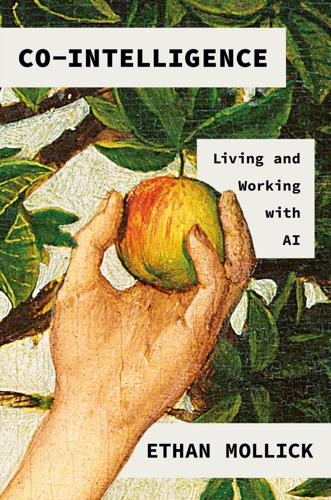
Co-Intelligence: Living and Working With AI
by
Ethan Mollick
Published 2 Apr 2024
The algorithms also work interactively, channeling workers in real time to whatever task the company wanted. And they are opaque—their biases, and even the way they make decisions—are hidden from workers. Wharton professor Lindsey Cameron saw this firsthand when she was a gig-working driver for six years as part of an intense ethnographic study of how workers deal with algorithmic management. Forced to depend on Uber or Lyft’s algorithms to find work, they engage in covert forms of resistance to gain some control over their destiny. For example, drivers might worry that a particular rider could give them lower ratings (thus hurting their future earnings), so they will convince the rider to cancel before pickup, perhaps by claiming that the driver can’t see the potential pickup spot.

The Currency Cold War: Cash and Cryptography, Hash Rates and Hegemony
by
David G. W. Birch
Published 14 Apr 2020
Maintaining stability Using this breakdown, and assuming that partially collateralized currencies will struggle to gain confidence and that collateralization by crypto is an unproven (and potentially dangerous) model, I think we should focus on three main mechanisms to deliver a stable currency. Algorithms, in which algorithms manage supply and demand to obtain stability of the digital currency. This is what a real stable cryptocurrency would be. Since a cryptocurrency is backed by nothing other than mathematics, it is mathematics that manages the money supply to hold the value steady against some external benchmark.27 Assets, in which an asset or basket of assets is used to back the digital currency.

Human + Machine: Reimagining Work in the Age of AI
by
Paul R. Daugherty
and
H. James Wilson
Published 15 Jan 2018
The term is meant to call attention to the ways in which automated and autonomous systems deflect responsibility in unique, systematic ways. While the crumple zone in a car is meant to protect the human driver, the moral crumple zone protects the integrity of the technological system, itself.14 For algorithmically-managed crowd platforms, human operators can also become “liability sponges,” getting bad feedback from a customer when it’s really the system’s fault, for instance. Additionally, they bear the brunt of expenses on their cars—the insurance, the gas, the wear and tear, all the while absorbing the liability on behalf of the ride-hailing app if something goes wrong with their ride-giving vehicle.
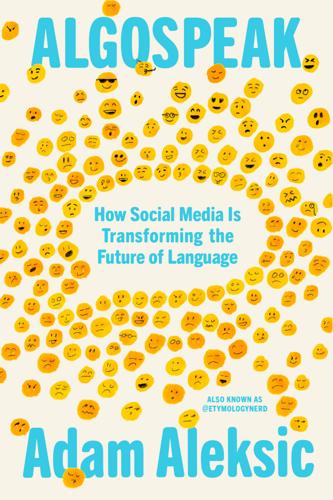
Algospeak: How Social Media Is Transforming the Future of Language
by
Adam Aleksic
Published 15 Jul 2025
BACK TO NOTE REFERENCE 2 Alice Marwick and Danah Boyd, “I Tweet Honestly, I Tweet Passionately: Twitter Users, Context Collapse, and the Imagined Audience,” New Media & Society 13, no. 1 (2011), 114–33, doi.org/10.1177/1461444810365313. BACK TO NOTE REFERENCE 3 Sydney Lambert, “The TikTok Effect: How the Social Media App Helps Spread Autism Misinformation,” National Council on Severe Autism, Oct. 18, 2023, www.ncsautism.org. BACK TO NOTE REFERENCE 4 Jonathan Stray et al., “The Algorithmic Management of Polarization and Violence on Social Media,” Knight First Amendment Institute at Columbia University, Aug. 22, 2023, knightcolumbia.org. BACK TO NOTE REFERENCE 5 Jeremy Frimer et al., “Incivility Is Rising Among American Politicians on Twitter,” Social Psychological and Personality Science 14, no. 2 (2023): 259–69, doi.org/10.1177/19485506221083811.

Thinking Machines: The Inside Story of Artificial Intelligence and Our Race to Build the Future
by
Luke Dormehl
Published 10 Aug 2016
Letting the computer analyse the songs revealed 2,883 unique numerical content descriptors, noting everything from pitch and tempo to other patterns we don’t commonly associate with music. Shamir then used a statistical tool called the K-Nearest Neighbor algorithm to determine the measure of similarity between any two songs in the database. Without human intervention, the algorithm managed to sort all thirteen albums into chronological order, beginning with 1963’s Please Please Me, before proceeding to With the Beatles, A Hard Day’s Night, Beatles for Sale, Help!, Rubber Soul, Revolver, Sergeant Pepper’s Lonely Hearts Club Band, Magical Mystery Tour, The White Album, Yellow Submarine, Let It Be and – finally – Abbey Road.
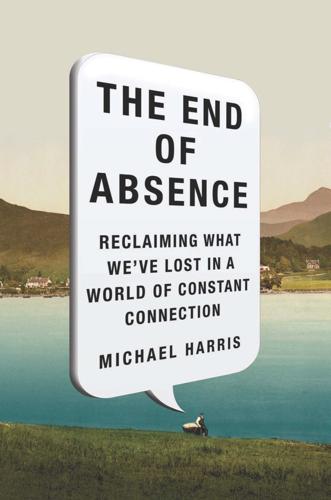
The End of Absence: Reclaiming What We've Lost in a World of Constant Connection
by
Michael Harris
Published 6 Aug 2014
Nor do we consider to what authority we’re doing the confessing. This is because the means of confession—the technology itself—is so very amiable. Dinakar is building a more welcoming online world, and it’s a good thing he is. But we need to remain critical as we give over so much of ourselves to algorithmic management. • • • • • In a sense, Dinakar and others at the Media Lab are still pursuing Alan Turing’s dream. “I want to compute for empathy,” Dinakar told me as our time together wound down. “I don’t want to compute for banning anyone. I just want . . . I want the world to be a less lonely place.”

Cogs and Monsters: What Economics Is, and What It Should Be
by
Diane Coyle
Published 11 Oct 2021
As described in Chapter Five, high fixed costs of starting up and network effects in digital business mean there are often these very large increasing returns to scale. As Shalizi observes: ‘[T]here are no general-purpose algorithms for optimizing under non-convex constraints. Non-convex programming isn’t roughly as tractable as linear programming, it’s generally quite intractable.’ This may be overstating the impossibility, as algorithms manage to address similar problems such as how should a logistics firm collect and deliver millions of parcels across the world; but at the scale of the whole economy with all the varieties it contains, it is certainly challenging. And these non-convex or increasing returns phenomena are pervasive in the modern, service- and knowledge-based digital economy.

Hello World: Being Human in the Age of Algorithms
by
Hannah Fry
Published 17 Sep 2018
They have a website, open to anyone, where you can try it for yourself. Since my Twitter profile is open to the public anyway, I thought I’d try out the researchers’ predictions myself, so uploaded my Twitter history and filled out a traditional questionnaire-based personality study to compare. The algorithm managed to assess me accurately on three of the five traits. Although, as it turns out, according to the traditional personality study I am much more extraverted and neurotic than my Twitter profile makes it seem.‡ All this work was motivated by how it could be used in advertising. So, by 2017,21 the same team of academics had moved on to experimenting with sending out adverts tailored to an individual’s personality traits.

What Algorithms Want: Imagination in the Age of Computing
by
Ed Finn
Published 10 Mar 2017
Uber is merely one prominent example of the broader movement to build this interface layer into many different cultural spaces, from hiring contractors for home repair to facilitating private party car sales. All of these markets were, of course, already technological, but they were largely inaccessible to direct algorithmic management until the advent of smartphones and ubiquitous sensors enabling the close monitoring of human and financial resources. In terms of labor and surplus value, what the algorithms of Uber, Airbnb, and their cohort capitalize on is the slack infrastructure of modern consumption: empty cars, unused bedrooms, and under-employed people.

The Meritocracy Trap: How America's Foundational Myth Feeds Inequality, Dismantles the Middle Class, and Devours the Elite
by
Daniel Markovits
Published 14 Sep 2019
Across restructurings in the 1980s and 1990s, middle managers were downsized at nearly twice the rate of nonmanagerial workers. And the share of all managers aged forty-five to sixty-four whose job tenure exceeded fifteen years has collapsed (falling by more than a quarter in just the two decades between 1987 and 2006). The process, moreover, continues today. Algorithmic management consulting firms now expressly seek “not [to] automat[e] [line workers’] jobs per se, but [rather to] automat[e] the [middle] manager’s job.” All this downsizing is driven by structural considerations rather than by firm-specific economic distress: it hits profitable as well as unprofitable firms, continues during economic booms as well as busts, and peaked during the epochal economic boom in the 1990s.
…
never met middle management: Min Kying Lee et al., “Working with Machines: The Impact of Algorithmic and Data-Driven Management on Human Workers,” Proceedings of the 33rd Annual ACM Conference on Human Factors in Computing Systems (April 2015): 1603, www.cs.cmu.edu/~mklee/materials/Publication/2015-CHI_algorithmic_management.pdf. every assembly line: For a broad overview of modern supply chain management, see generally Martin Christopher, Logistics and Supply Chain Management, 5th ed. (Harlow: Pearson, 2016), 35 (discussing how “just-in-time” strategy results in minimal inventory), 194 (the use of event management software to manage inventory levels), 225–26 (discussing the merits of Six Sigma management techniques), 289 (a change-embracing corporate culture).
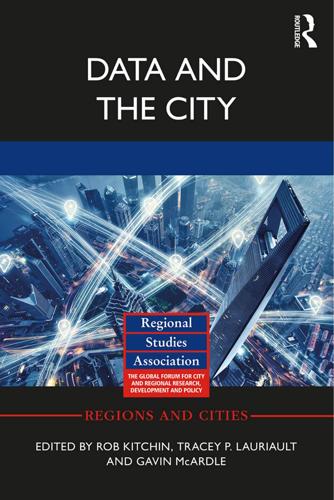
Data and the City
by
Rob Kitchin,Tracey P. Lauriault,Gavin McArdle
Published 2 Aug 2017
However, to date, there has been relatively little critical reflection on the new emerging relationship between data and the city, and how we come to know and understand cities through data in the present era. In the rush to create so-called ‘smart cities’, wherein core city services and infrastructures become digitally mediated and data-driven – generating, processing and acting on data in real-time to algorithmically manage systems and calibrate performance – much of the attention has been on how to technically create and implement suitable smart city technologies, and associated institutional and infrastructural supports such as data standards, protocols, policies, and a variety of telecom networks. Such data-driven technologies include: urban control rooms, e-government systems, city operating systems, coordinated emergency 2 R.

This Is for Everyone: The Captivating Memoir From the Inventor of the World Wide Web
by
Tim Berners-Lee
Published 8 Sep 2025
One could argue that the primary obstacle facing the web today is the power concentration among a handful of major sites. Along with search engines, Facebook, Instagram, YouTube, TikTok and X handle an enormous amount of the traffic. As I’ve explained, each site is essentially a variation on the same concept, delivering media in an endless feed of algorithmically managed addictive content. The open space for collaboration and experimentation that defined the web through its first twenty years has been pushed aside by these new channels. How has this happened? Instead of a tool for public good, the web has become more and more subject to capitalist forces tending towards monopolization.
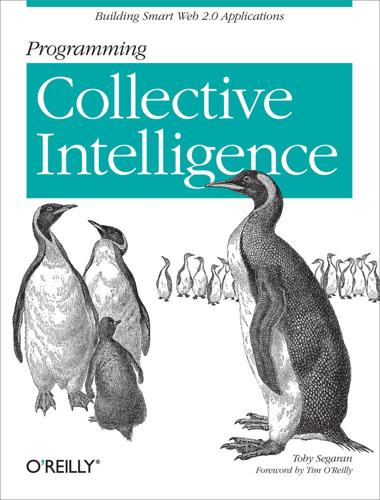
Programming Collective Intelligence
by
Toby Segaran
Published 17 Dec 2008
You can try running this on the matrix m1*m2 from your session to see if the algorithm finds a solution similar to the original matrix: >>>import nmf >>> w,h= nmf.factorize(m1*m2,pc=3,iter=100) 7632.94395925 0.0364091326734 ... 1.12810164789e-017 6.8747907867e-020 >>> w*h matrix([[ 22., 28.], [ 49., 64.]]) >>> m1*m2 matrix([[22, 28], [49, 64]]) The algorithm manages to find a weights and features matrix that multiplies together perfectly to match the original. You can also try this on the articles matrix to see how well it can extract the important features (this may take some time): >>>v=matrix(wordmatrix) >>> weights,feat=nmf.factorize(v,pc=20,iter=50) 1712024.47944 2478.13274637 2265.75996871 2229.07352131 2211.42204622 The variable feat now holds the features of the news articles, and weights holds the values that indicate how much each feature applies to each article.

Rise of the Robots: Technology and the Threat of a Jobless Future
by
Martin Ford
Published 4 May 2015
As the competing search algorithms reel in hundreds of possible answers, Watson begins to rank and compare them. One technique used by the machine is to plug the potential answer into the original clue so that it forms a statement, and then go back out to the reference material and look for corroborating text. So if one of the search algorithms manages to come up with the correct response “resignation,” Watson might then search its dataset for a statement something like “Secretary Chase just submitted resignation to Lincoln for the third time.” It would find plenty of close matches, and the computer’s confidence in that particular answer would rise.

Rage Inside the Machine: The Prejudice of Algorithms, and How to Stop the Internet Making Bigots of Us All
by
Robert Elliott Smith
Published 26 Jun 2019
By 2011 there were a reported 500,000 Turkers located in 190 different countries and as The Atlantic reported in 2018 most of these workers are isolated and living in areas where traditional employment has dried up.6 Employed as contractors, Turkers have no labour protections and aren’t subject to minimum wage laws. Turkers are the poorly paid backstop for algorithmic imperfections, in much the same way workers in the early industrial era were paid poorly to service machines. Throughout the new ‘gig’ economy, there are people working with limited protections, responding to algorithmic management. The drivers of services like Deliveroo and Uber have their work assigned by algorithms and do the part of their task that the algorithms simply cannot do: speedy delivery to the door, in navigation situations (on bike and on foot) that are unlikely to be effectively addressed by autonomous vehicles anytime soon (although that, too, is wildly promised).

Don't Be Evil: How Big Tech Betrayed Its Founding Principles--And All of US
by
Rana Foroohar
Published 5 Nov 2019
That varies based on the algorithm; according to my own anecdotal interviews with drivers in NYC, it has been decreasing as Uber has built its market share, and is around 20 percent now, as opposed to roughly 30 percent for the local independent cab services that some people in the neighborhood still use. Uber touts its drivers as “free and independent” contractors, yet thanks to its automated algorithmic management system, the company is able to control how they work and penalize them when their behaviors deviate from what might be most profitable—for Uber.10 Using artificial intelligence, Uber is able to identify a class of consumers that might be willing to pay more than others for rides, depending on their zip codes.

Custodians of the Internet: Platforms, Content Moderation, and the Hidden Decisions That Shape Social Media
by
Tarleton Gillespie
Published 25 Jun 2018
Others worried that filtering software was being installed by school administrators and office managers, allowing them to filter the web traffic of an entire school body or all their employees, often without the users’ consent. Social media platforms can incorporate the logic of filtering to a much more sophisticated degree. Platforms are intricate, algorithmically managed visibility machines.20 They grant and organize visibility, not just by policy but by design: sorting and delivering information in the form of profiles, news feeds, threads, channels, categories, updates, notifications. Some content stays where you first posted it, some content is vaulted to the front page, some is delivered to your followers or friends—as you direct it, or as algorithms determine.

Complexity: A Guided Tour
by
Melanie Mitchell
Published 31 Mar 2009
Particles give us something we could not get by looking at the cellular automaton rule or the cellular automaton’s space-time behavior alone: they allow us to explain, in information-processing terms, how a cellular automaton performs a computation. Note that particles are a description imposed by us (the scientists) rather than anything explicit taking place in a cellular automaton or used by the genetic algorithm to evolve cellular automata. But somehow the genetic algorithm managed to evolve a rule whose behavior can be explained in terms of information-processing particles. Indeed, the language of particles and their interactions form an explanatory vocabulary for decentralized computation in the context of one-dimensional cellular automata. Something like this language may be what Stephen Wolfram was looking for when he posed the last of his “Twenty Problems in the Theory of Cellular Automata”: “What higher-level descriptions of information processing in cellular automata can be given?”

Dangerous Ideas: A Brief History of Censorship in the West, From the Ancients to Fake News
by
Eric Berkowitz
Published 3 May 2021
The highest function of the news, as the saying goes, is to speak truth to power, and time and again that goal has been met. However, Internet platforms have become virtual states unto themselves, but without the duties of states. No one voted for them, nor do we know exactly how they and their algorithms manage our speech. Yet they decide which of their billions of users will be heard and by whom, and which will not. That abuses occur countless times daily can be no surprise. They are built into the system. It comes down to money—what the technology writer Charlie Warzel calls the “original sin” of Big Tech’s prioritization of growth over the interests of users.58 When an aging senator asked Facebook’s Mark Zuckerberg in 2018 how the platform can be free to users, Zuckerberg replied (to snickers worldwide), “Senator, we run ads.”

The Wires of War: Technology and the Global Struggle for Power
by
Jacob Helberg
Published 11 Oct 2021
But the truth is that our data—whether you’re buying a pair of shoes online or looking up a medical diagnosis on WebMD—does pass through tangible telecommunications lines and data storage centers. We speak of “the cloud,” but the reality is much more concrete. You might even call the Internet a series of tubes with algorithms managing the flow of data. The tubes analogy is worth keeping in mind because—even while scoffing at the notion that the Internet is anything like an ordinary utility—we frequently imbue our telecom system with the same faith. We don’t think twice about how the information that flows into and out of our various devices travels from Point A to Point B.

Power and Progress: Our Thousand-Year Struggle Over Technology and Prosperity
by
Daron Acemoglu
and
Simon Johnson
Published 15 May 2023
To explain this problem, it is useful to have a broader understanding of the overfitting problem, based on using irrelevant or nonpermanent features of an application. Consider the task of distinguishing wolves from huskies. Although humans are excellent at this task, it turns out to be a difficult one for AI. When some algorithms managed to achieve good performance, it was later understood that this was thanks to overfitting: huskies were recognized from urban backgrounds, such as nice lawns and fire hydrants, and wolves from natural backgrounds, such as snowy mountains. These are irrelevant characteristics in two fundamental senses.
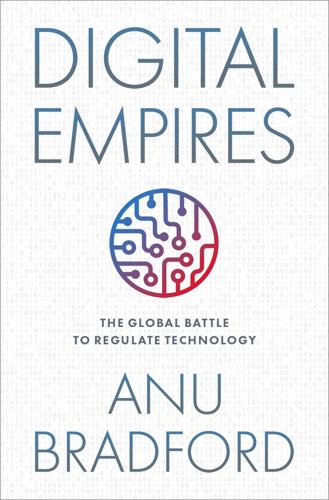
Digital Empires: The Global Battle to Regulate Technology
by
Anu Bradford
Published 25 Sep 2023
By setting out the criteria that determine when the platform is considered an “employer,” the Directive is expected to lead to a significant reclassification of platform workers—such as Uber drivers—as employees.144 This would extend various labor and social rights to these workers that traditional employees are entitled to under the national laws of each EU member state. In practice, platform companies would be required to respect laws on minimum wage, collective bargaining, working time, unemployment, sickness benefits, and more.145 The Directive also calls for greater transparency in algorithmic management of platform workers, vesting workers with the right to contest automated decisions and mandating platforms to complement algorithms with human monitoring.146 This EU-level measure was, in part, motivated by the EU’s growing awareness of the inadequate employment protections available to platform workers.